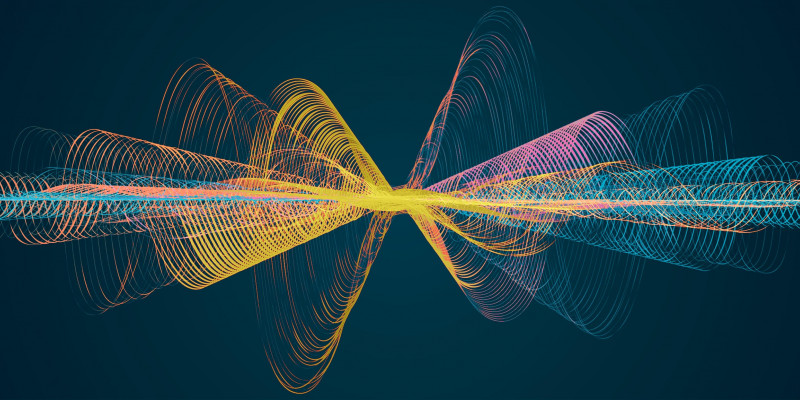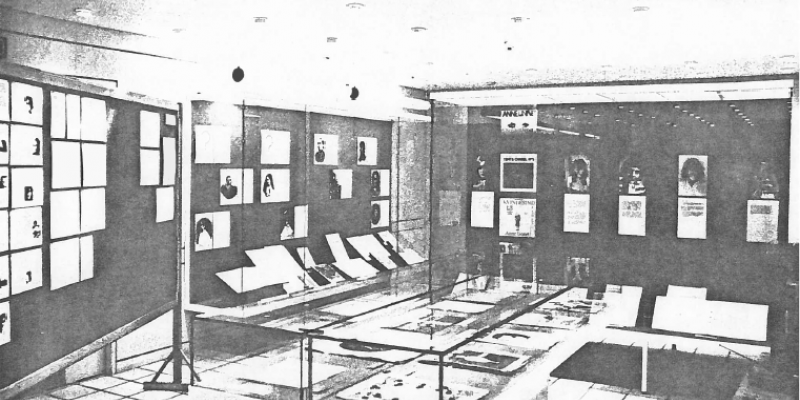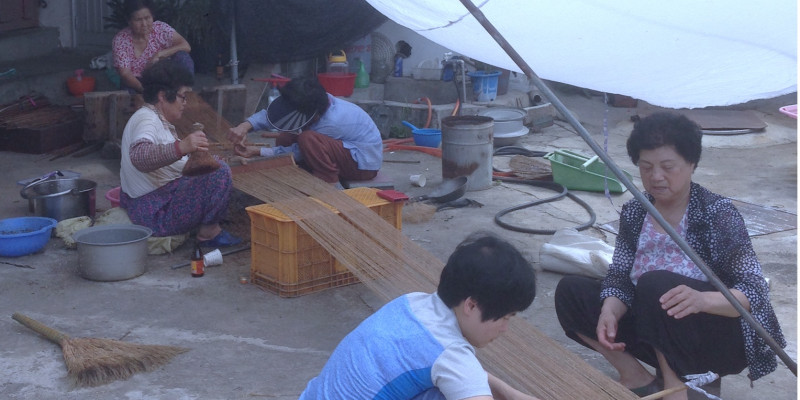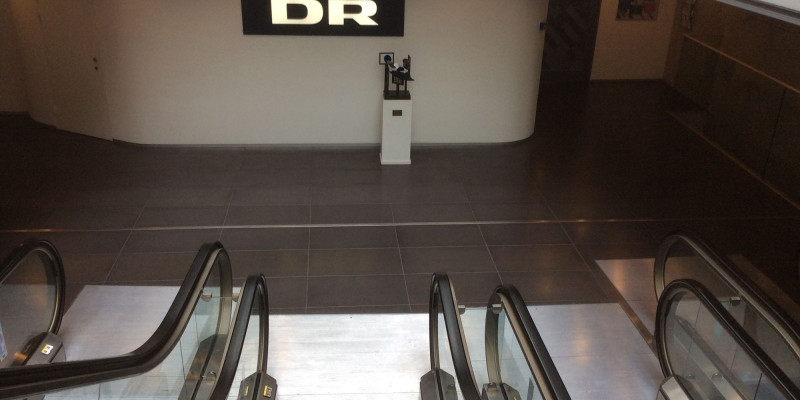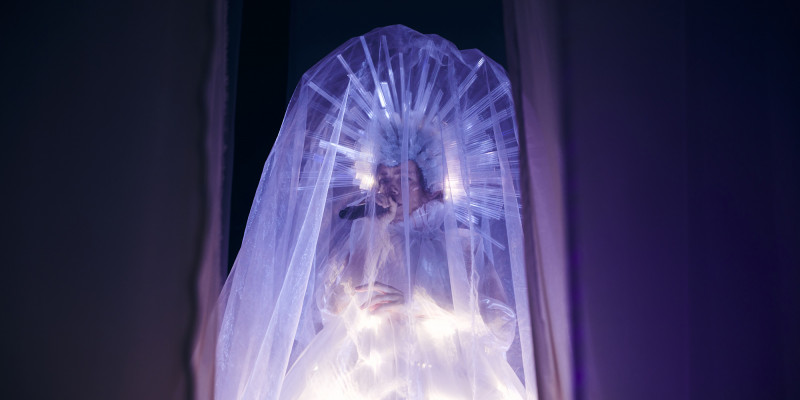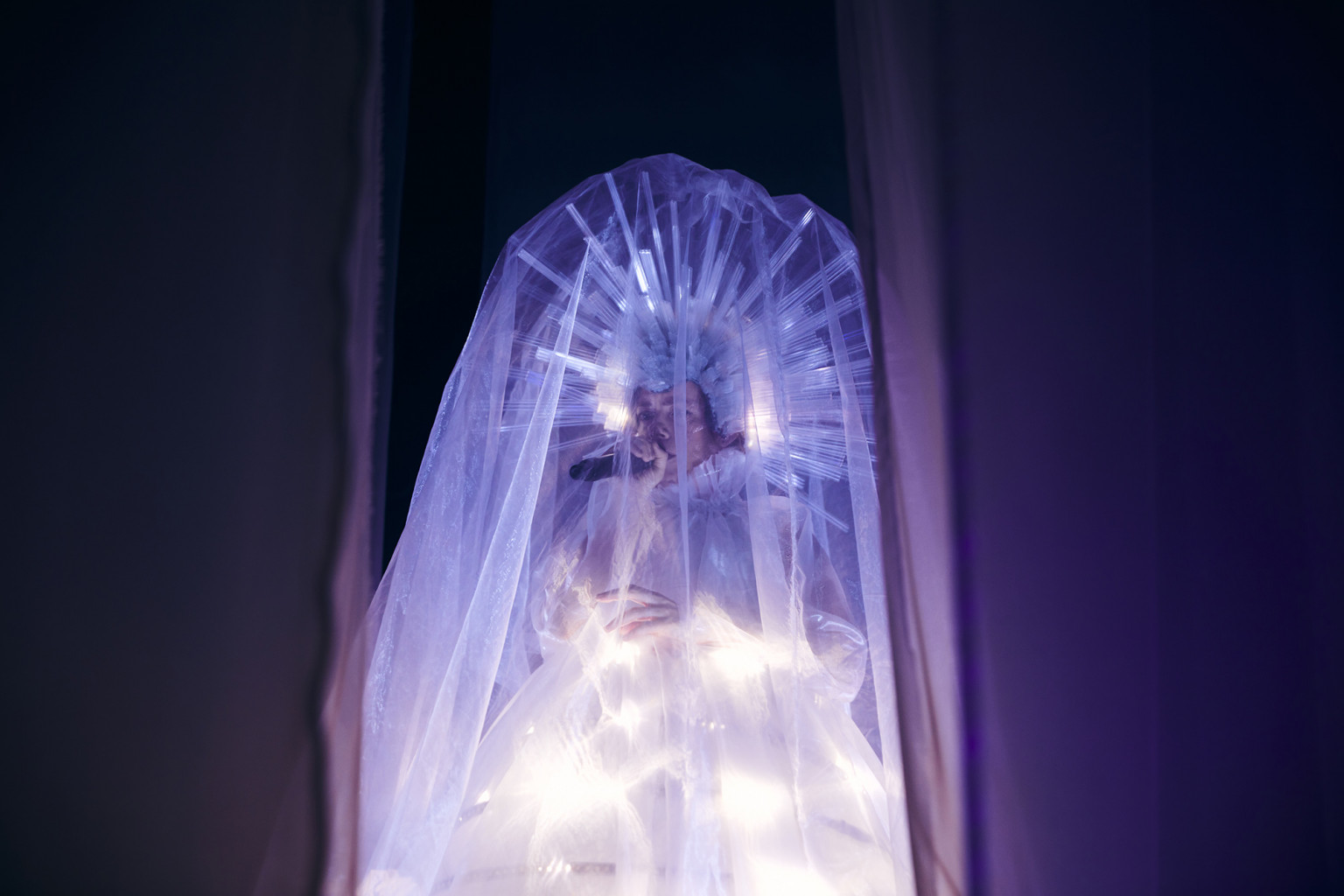
Sensory concert
Abstract
In September 2020 pop-artist Kh Marie (one of the authors) performed the sensory concert intet er nok (nothing is enough) in Aarhus, Denmark. The concert invited the audience into a concert experience of sound, scent and movements, creating a space for disorientation of the dominant refrains of the pop-stage. In this article we explore how the physical pop-stage has traditionally been a gendered object in Western culture that orients itself towards certain bodies; and certain bodies towards it, hereby leaving some bodies feeling out of place. The article thus argues that the traditional pop-stage is an example of how gendering of spaces is not only as a discursive orientation, but how it is also a material and affective issue that extends itself out into the subjects and objects that inhabit them. Through repetition of the gendered refrains, they become internalized, like the chorus of a good pop-song stuck in our heads. We analyse the sensory concert as one example of how to challenge the gendered stage that, through an attuning approach, creates tactics of disorientation that allow bodies and stage to resurface as a non-gendered space.
Prelude: The Disoriented Audience
Alongside the rest of the audience, I am guided from the entrance of Aarhus Theatre into the biggest hall that normally seats 700 people. The hall is empty, and we are asked to step up onto the stage where 80 chairs are placed in a circle consisting of 3 rings of chairs. I take a seat. We are all facing the middle where a small round platform is covered by large semi-transparent fabrics hanging from the ceiling.
The curtains go down, hiding the empty seats in the hall. The lights go out and in the darkness a mix of female and male voices slowly emerges, singing one long, sustained note. I see the silhouettes of a sixteen-person choir that slowly walks around on the creaking floor inside the circle. They stop, standing facing us, the audience. Suddenly, the lead artist is lowered from the ceiling, the fabric of her dress is illuminated by the stage light, reminiscing the tentacles of a jellyfish swaying through water.
As the second song begins, the curtain that hid the empty theatre goes up, and behind it is the band, standing on the edge of the stage facing towards us. Our chairs start moving slowly, the inner and outer circle going clockwise while the middle-row is going counter-clockwise, creating a disorientating space.
During the third song my nose is hit by a scent of spruce, earth and heat. The lead singer’s dress lights up, blinking in the rhythms of the music. I feel the urge to clap in between songs, but instead of the silence before an applause, the room is filled with geophonic soundscapes of e.g., a thunderstorm, creating an overall atmospheric flow of the concert. After 40 minutes the concert ends, as the curtain closes to the empty theatre hall where the musicians are now hidden and what is left is the opposite world: the audience is left alone on the stage.
Introduction
This article is centred around a specific sensory concert taking place in the Danish city Aarhus in September 2020 with pop-artist Kh Marie. The concert marked the release of Kh Marie’s first solo-album intet er nok, after she had been in several other well-known pop/rock bands including Nephew, one of the biggest Danish acts.
To invite the reader into the context of our research subject for this article, we begin and end the article by describing the experience of being part of the sensory concert. The experience is unfolded through two phenomenological perspectives; the first perspective was that of the audience, which is based on one of the authors’ (Udsen’s) experience of attending the concert. The second perspective will be presented at the end of the article, as a postlude, where the performer herself, who is co-authoring this article (Højlund), will describe her experience of creating, performing and being in the middle of the sensory concert.
Furthermore, the reader can also get an impression of the concert through the video-documentation below (can also be viewed through VR-glasses):
Our research is based on an (auto)ethnographic field study, consisting of both observation and participation happening around the sensory concert intet er nok. Furthermore, we broaden our scope by drawing on interviews by Malmø (2020) and reviews by music critics from papers and magazines. This empirical work is then informed by central theories from feminist-, sensory- and sound studies related to the interdisciplinary approach of ethnomusicology.
We refer to our work as what for instance Richie Nimmo (2011) and Alexandra Plows (2018) has referred to as a messy ethnography, as our involvement in the project is a weave of orientations that together have informed our material. As such, in the prelude and postlude we express our personal experiences of being part of the concert, while we in the main text shift our orientation toward the concert as a material, affective and culturally gendered object of study. Our text-based empirical data is based on interviews conducted by Malmø in her master thesis 'Kvindelig aktører – om oplevet andethed I musikbranchen' (‘Female actors – about experienced otherness in the music business’, Malmø, 2020) and reviews of Danish female concerts including Kh Marie’s which makes the data analysable as both text and felt experience.
In the article we will first elaborate on our understanding of the pop-stage as a physical place for live music performances. This is followed by a discussion of the pop-stage as being culturally gendered, where we use Sara Ahmed’s concepts orientation and out of placeness as a theoretical framework for the discussion. We consequently argue that the gendered pop-stage is to be understood as a material, embodied and affective issue and should be dealt with as such. From here, we introduce a situationist tactic to disorient the gendered pop-stage, which we refer to as an attuning approach for multimodal disorientation, and present how this is manifested in the sensory concert through bodies, senses and voices. Lastly, we present the postlude in which the author and artist Kh Marie describes how she was disoriented throughout the experience.
With this article we want to stress the importance of considering the institutionalized places that often tend to fall into the background as ‘neutral' spaces – such as the physical pop-stage. We argue that there is a need to reveal the internalized gendered refrains that affords certain bodies and embodied conventions, in order to renegotiate them. To expose and renegotiate the gendering of the stage, we argue that we need to approach the space through material and affective disorientation practices to allow room for new interpretations to form, as discussions often risk following a discourse that reproduces what it tries to change.
The pop-stage
In this article, the term pop-stage is defined as the material, cultural and affective place where artists perform live pop-music to an audience and the critics. A concrete meeting-point where smells, lights, bodies, feelings, technologies, instruments, soundwaves etc. are entangled into a live music experience.1 There is no clear definition of a »pop-stage« and there are many related names such as »live-stage«, »concert-stage«, »musical-stage« etc. all marking a designated space for a live performance and focal point for an audience. We follow Simon Frith’s (2001: 94) definition of pop-music as being something that appeals to a general audience rather than a subculture or ideology. This broad definition follows the general understanding of pop-music as being popular music that appeals to most people, and thereby having economic and transmissive attributes (Booth and Kuhn, 1990) that makes it appealing/popular to the music industry and mass media. This broad definition indicates that pop-music orients itself towards certain bodies, described above as the general audience. Hereby, when the music is performed on stage it orients itself towards this audience and invites them into the space. But when referring to the audience as the general it creates an intersubjective idea that such a general body exists. We will argue that such a general body is problematic, as the examples testify to the stage having a cultural gender, which is created through several cultural, aesthetic and political discourses in the music industry.
We furthermore distinguish the term pop-stage from the term pop-scene, as a way to situate our work within the concrete concert experience. Following Will Straw (1991) the pop-scene describes the various interactions and processes in, on and around the music (rehearsing musicians, reviews, merchandise, online fan groups, record companies, etc.) as a broader cultural phenomenon including (socio)political and economic factors (Straw, 1991: 373), that actualizes a particular state of relations between various populations and social groups (Straw, 1991: 379). The gender problematics of the broader pop-scene are widely discussed within academia and ranges out in all genres and parts of the industry, including music videos (Aubrey and Frisby, 2011), music criticism (Faupel and Schmutz, 2010; 2011), gendering of music instruments and of band member roles (Green, 1997, 2002; Hallam et al, 2008) and gendered streaming service algorithms (Werner, 2020). In a report on diversity in the Danish music industry from 2017, statistics showed that 74% of the members of ‘Dansk Musiker Forbund’ (‘Danish Musicians Association’) are male. The same number, 74%, is seen when looking at performing musicians. If we include record labels males dominate with 80%, and if we include technical personnel the number is a skyrocketing 98% (Dansk Musiker Forbund et al, 2017).
In contrast to the growing amount of research about the broader pop-scene, there is still a lack of research on how heteronormative understandings of gender is expressed through the pop-stage as a physical space. However, in her writings on country music, Kirstine M. McCusker (2017) argues that the physical stage affords an authenticity narrative that hides its gender conventions and performances in the guise of authenticity. By affording an authenticity narrative, the stage takes the shape of a pseudo fortress, making it hard to problematize the roles created within it (McCusker, 2017: 1). This authenticity narrative is continued, not only on stage, but in the reviews afterwards, where the dominance of men in popular music (and other genres) creates a vacuum where critics often tend to write towards a male audience hereby reinforcing gender stereotypes (Faupel and Schmutz, 2011: 22). Males are often considered the default body on the stage, whereas the female becomes gendered; the ‘female artist’, ‘female guitarist’ and ‘female band’ thus the ‘female’ becomes a delegitimising category, reinforcing the male dominance as the authentic narrative.
Martin Stokes (1997) describes how gender becomes a symbol of social and political order, where the control of gender behaviour becomes a means of controlling the order, in this case controlling what McCusker (2017) refers to as the authenticity narrative of the stage. Stokes elaborates by saying that these social practices are »as ‘natural’ as the boundaries which separate one community from another« (Stokes, 1997: 22). Women do inhabit the pop-stage, but due to the social practices, they are introduced into the spaces they inhabit as gendered subjects that do not fit the narrative or understanding of the general body. This means that when she orients herself towards the stage, either as audience or performer, the stage doesn’t directly orient itself back towards her.
The pop-stage has a gender and it is male, as it »upholds gender binaries, as well as granting prominence to naturalised ideas of femininity and masculinity,« as Kai Arne Hansen describes it (Hansen, 2017: 89). But, as we want to argue in this article, the pop-stage is also a meeting-point where different agents orient themselves towards the same material and affective space, thus creating an opportunity to introduce an attuning approach that disorients the dominating narrative, and opens toward the opportunity to let bodies and stage resurface as a non-gendered space. By non-gendered spaces we refer to spaces which seek to rupture the orientation of the present authentic narrative, allowing subjects regardless of gender and sexuality to feel in place on the pop-stage.
Orientation Matter
To be oriented is also to be oriented toward certain objects, those that help us find our way. These are the objects we recognize, such that when we face them, we know which way we are facing. They gather on the ground and also create a ground on which we can gather. Yet objects gather quite differently, creating different grounds. What difference does it make what we are oriented toward? (Ahmed, 2006: 543)
Sara Ahmed (2010) describes orientations as how the world acquires a certain shape through contact between humans and objects. It is not only our bodies that orient themselves towards things, but spaces also orient themselves towards certain bodies, which makes some bodies feel more ‘in place’ than others. By indicating that some bodies are in place this leaves others with a feeling of what Ahmed refers to as being out of place (Ahmed, 2010: 254). When things and places also orient themselves toward certain bodies, it affects how both subjects and objects take shape in situations, such as a performance. As an artist, you orient yourself towards performance, which means that performance matters, as well as it is something that you do. By orienting yourself towards performance, certain objects become available, or they are at least within the scope of your orientation; the stage, your instrument, other musicians, the audience, etc. and so your orientation takes part in shaping the world, what objects are near your body, the things you do performance with.
The experience of out of placeness is tightly connected with an experienced Otherness. Feminist writer Simone De Beauvoir (1949) have described how the female gender is perceived as the Other in society, whereas the male, to elaborate on Beauvoir’s thinking, is the normative or general body of the performer and audience. As part of a survey based on interviews with 30 female and 1 non-binary danish musicians by Malmø (2020) it is indicated that 84% of the participants experience a feeling of Otherness in the music industry.
Ahmed (2007: 159) states that when bodies inhabit places that they are not thought of as being part of, they become both invisible and hypervisible at the same time. As we argued the pop-stage is generally male-dominated, whereby the female becomes invisible as she is not considered part of the orientation of the stage. Then, when she does inhabit the space, she becomes hypervisible; she does not pass the male codes, so she stands out, and this creates a feeling of being out of place. This feeling is reinforced by the relation between the pop-stage’s orientation and the performer, in this case the female, who also participates in constructing her gendered subjectivity (Hurley, 1994). Gender is not in the stage or in the bodies on it, but it is an effect of how bodies take up objects and are occupied with them, referred to as gendered forms of occupation (Ahmed, 2010: 251). Through repetition of these patterns, they become habitual and shapes the body and what it can do on the pop-stage. The feeling of being out of place is created through the entanglements of different bodies, cultures, objects and places through generations, where the repetition of it has internalised it within us as a norm. Drawing on Deleuze and Guattari (1987) this phenomenon can be described as a refrain, something that acts upon that which surrounds it. The refrain has a catalytic function, where it does not only increase the speed of exchanges and reactions around it, but also assures indirect interactions between elements without a natural affinity, thereby forming an organised mass (Deleuze and Guattari, 1987: 348).
Ahmed (2013) describes how emotions are intentional as they involve a direction or orientation towards an object, and so, they indicate a stance or a way of apprehending the world (Ahmed, 2013: 7). When our orientation to the stage is formed by an authenticity narrative that is male dominated, the female out of placeness is repeated as a refrain that can capture and transport affect. Hereby, the refrain provides the affective cues that renders a crowd into a public, and in our case, a refrain that orient us towards a definition of male as the general body, and female as Other on stage. In her study of the Danish media’s coverage of #metoo on Facebook Camilla M. Reestorff describes how collective affects keep on gaining strength through strong emerging refrains that determine which affects can be oriented towards which bodies (Reestorff, 2019: 17). Thus, through the repetitions of the refrain, the orientation of the pop-stage is directing itself towards certain bodies, where the affective refrains that are associated with it become sticky (Ahmed, 2013: 11). Repetition of the refrains thus predetermines and affords certain individual, sensory and corporeal constellations, situations and practices while it excludes others.
In the keynote talk ‘The Female Gaze’ (2016) Soloway described the female gaze (which Soloway also describe as the queer-, other-, non-binary gaze) as »a conscious effort to create empathy as a political tool. (...) A wrestling away of the point of view, of the power of the privilege propaganda for purposes of changing the way the world feels for women when they move their bodies through the world, feeling themselves as the subject« (Soloway, 2016). Opposite of the female gaze is the male gaze which was first formulated in Laura Mulvey's (1975) article ‘Narrative Cinema and Visual Pleasure’. The male gaze theory is broadly understood as the theory of how women in visual art and literature are portrayed through the eyes of a cishet (cis-gender and heterosexual) man. Here, the women are presented as passive objects of male desire, and as viewers we are forced to view them from this point of view. Hereby, the male gaze becomes part of our own orientation. The male gaze has also gained interest within music studies over the last decades (Cooper, 1985; Aubrey et al, 2011; Conrad et al, 2009; Breethauer et al, 2006; Flynn et al, 2016). A move towards a non-gendered stage is thus also a move towards the female or non-gendered gaze. One thing is our own orientation towards the stage, but as Ahmed (2010) described, it also concerns how other bodies and materials orient themselves towards us. As we through decades have been fed the male gaze refrain, it has become internalized in our bodies, and so we risk reproducing it.
In the following we therefore want to propose that the three gendered refrains mapped above (the male-oriented pop-stage, body and gaze) cannot be changed by simply giving the female artist a voice in the refrain. It is the very refrains that repudiates her, as the refrains would stay in the background because they are internalized through repetition. Drawing on Husserlian phenomenology, Ahmed (2010: 239) argues that the background is what is unseen through its ‘thereness’ and familiarity. Thus, when facing the pop-stage it is not necessarily in front of us as its familiarity puts it in the background. Ahmed explains how the background can be understood in different ways, in our case, as the stage being in the background or the background as being what is around the stage, thus referring to a spatial background. Ahmed furthermore explores a temporal understanding of the background, e.g., the object itself as having a background. To think of the object as having a background allows us to think about how it arrives over time. It is within this background that we find the affective refrain, that we need to catch and challenge from the inside. Therefore, the gender issues related to the pop-stage cannot be solved solely through a discursive that focuses on the politics of gender.
If we follow Ahmed (2006), challenging the dominating refrains would therefore demand tactics of disorientation that obscure the gendering of the pop-stage from within the dominating refrains. Disorientation acts directly through the senses by making the familiar (refrains) appear strange, to attend to that which has been put in the background of attention, internalized in our culture and bodies. A moment of disorientation is not primarily an intellectual experience of disorder “but the vital experience of giddiness and nausea, which is the awareness of our own contingency and the horror with which it fills us” (Merleau-Ponty, 2002: 296, in Ahmed, 2006: 544). Disorientation is, in this understanding, at its core about exposing the narrative by creating moments of distortion and ruptures in the refrains.
According to Holger Schulze's analysis of the dominant refrains in Sound Design (or sensologies2 , in his terminology), he argues that they can most directly be challenged by interventionist tactics shifting the very present situations, through a situationist tactic disrupting the existing repressive refrains. This approach therefore takes a starting point in the existing situation that it wants to challenge, by presenting a disruptive sensology (or disorientation) that dismantles the existing refrains from the inside (Schulze, 2019: 237).
Based on readings of both Ahmed and Schulze we consequently argue that the gendered pop-stage is to be understood also as a material, embodied and affective issue and should be dealt with as such. This shifts the focus from the discursive domain towards issues related directly towards how we design the sensory spaces and experiences on the present pop-stage differently, so that the present authenticity narrative of the stage can be challenged from the inside. In the next part of the article, we therefore propose concrete examples of how to unfold tactics to disorient the three gendered refrains (pop-stage, body and gaze) in the case of the sensory concert with Kh Marie.
An Attuning Approach to Multimodal Disorientation
To disorient the meaning of the stage, we need first to attune to its dominant affective refrains, to first create awareness of how we are currently habituated and attuned to it, in order to then disorient their meaning from the inside. But how can these internalized backgrounds that fall out of common awareness, be pulled into the centre of attention so that they become open to intervention and disorientation in practice?
We turn here to earlier work by Marie K. Højlund, Jonas R. Kirkegaard, Michael S.E. Kristensen and Morten Riis, that argues for an attuning approach, aiming at catching such affective refrains from the inside in order to create counter-attunement or disorientations through our body and senses (Højlund et al., 2021). The attuning approach takes its starting point in theories on affective attunements as relational intensities that are constituted collectively between humans and things in the in-between (Böhme, 2009: 93). According to Heidegger, affective attunements are out of awareness and thus act prior to will and cognition, like the affective refrains. Therefore, most often one cannot simply decide consciously to delete such attunements by thinking differently about them. Heidegger argues that negotiating resistance against existing attunements should therefore happen through counter-attunements, resonating with the existing attunement (Heidegger, 2002: 136). In this sense, the counter-attunement needs to catch the existing attunement, if the involved are to be affected by the counter-attunement. In this way, facilitating counter-attunements demands a disjunction between one 'there' (existing attunement) and another (counter-attunement) by creating an object of affective attachment in the existing attunement that challenges it from the inside (Højlund et al., 2021). This object of affective attachment then acts as an attentional cue in the existing attunement inviting us to consciously experience both the setting (the stage) and ourselves as a closeness. This cue of closeness creates a moment where a new repeated disorientation can start to gain weight as a new counter-attunement or counter-refrain.
We argue that in order to challenge the existing refrain, the object of affective attachment and the disorientations that follows needs to be powerful enough to not only create new alternative songs. Instead, we should aim at creating new refrains that challenge the existing refrain, by applying a multimodal disorientation tactic. It is well known that we remember and learn better when the information is presented to us multimodally (Shams & Seitz, 2008) for instance by taking visual, olfactory and tactile elements and syncing them with the audible elements (Højlund et al., 2021). The sensory concert intet er nok engaged a number of disorientation tactics to rupture the dominant refrains of the stage rooted in a multimodal attuning approach as follows.3
The Disoriented Body
In the sensory concert intet er nok the stage is in itself disoriented, first in terms of location. The concert takes place in a theatre instead of a concert hall, which allows different connotations and listenings as our relation to the physical space is different. Furthermore, the concert was promoted in the press as a pop-concert, instead of as a theatre concert or experimental art performance. Second, the audience is placed on the stage, instead of in the audience-seats facing the stage, whereas the musicians are placed on the edge of the stage making the audience look out towards the empty seats where they would normally be placed. The placement of the musicians and audience on the same stage, but rotating in different directions, creates a rupture to the dominant refrains and the hierarchy of the stage; as the place where we normally look up to the musicians. In this setup the audience is allowed into an arena that they are normally prohibited from entering, presenting the stage as an object of affective attachment. Quite literally, by shifting the placement of all the bodies involved in the concert, the orchestrated out of placeness leaves room for counter-attunements as all the bodies involved are attuned to the ‘normal’ stage, and thereby know that this experience is something different. It is a space where we don't know the refrain, which leaves room to rehabituate the bodies and the stage. As one music critic wrote in the review of the concert in a Danish paper the concert afforded »(...) disorientation, poetic buzz and reversal of perspective (...)« (Mielczarek, 2020, our translation).
The Disoriented Senses
In regards to the refrains of concert experiences, the hierarchy of the senses are normally focused on listening and seeing, even though other senses can also be highly activated in the experience; touching/brushing up against other people, the smell of sweat, smoke-machines, the taste of drinks in the breaks, etc. In the sensory concert the hierarchy is from the beginning ruptured. As the audience take their seat on the stage the lights are turned off, leaving them in the dark which allows for a heightening of the other senses. As the chairs start to move, the kinesthetics of the body are ruptured, where even the part of the audience whose chairs did not move, felt that they were also spinning. This is followed by a scent filling the room, creating a sensation of synaesthesia as the heightened listening mode is now being accompanied by a smell, thereby creating a multimodal synchronisation between the senses. This rupture in the traditional sensory hierarchy allows for a new attunement of the senses, dominated by a multisensory and kinaesthetic experience. Through this disorientation, the body that was before out of place is invited to resurface through slow re-habituation.
Eric Clarke argues that our listening modes are highly context-dependent, shaped by our cultural- and social understandings of e.g., the concert situation. In our normal everyday environments, listening is an active and explorative act. Clarke argues that within classical music the idea of autonomous music has shaped a listening culture based on the belief that you can carve out music from the environment to afford a concentrated structural listening detached from its environment, thus restricting an active and explorative listening in e.g., the classical concert hall (Clarke, 2005: 134). Normally the audience at a pop-concert is placed in front of a stage, directed towards the band and the stereo-speaker perspective, affording a directional and explorative, yet restricted, listening perspective. The audience at the sensory concert was placed inside a circle of speakers that enveloped the listener in sound and music from all sides. In the beginning of the concert the choir sang acoustically while moving around the audience. Natural soundscapes of pouring rain, thunder and night ambience were mixed in between the songs. These three tactics all worked together to open towards more explorative and active listening modes in order to attune dynamically and shift listening perspectives throughout the concert.
Furthermore, the audience could bring home a card that smelled like the scent they were presented with during the concert, which allowed for a re-triggering of the new attunement ensuring that it can be re-habituated again. In order to overwrite the existing refrain, the counter-attunement needs to be repeated in order to anchor itself as a new habituation. The scented card becomes a multimodal disorientation tactic that helps manifest the new attunement through what Rachel S. Herz (2011) refers to as odour-evoked memories. These odour effective cues to memory are »experienced as more emotionally intense than other memory experiences« as »odors specifically linked to past events evoke memories for those events« (Herz, 2011: 267). Through using the scented cards that the body can sense/smell after the concert, it creates an odour-evoked memory that not only ruptures the experience of being at this concert, but also creates a way to rupture the refrain of what a concert is in general. Thus, the sensory concert should not be experienced as a singular event, but open itself to become new affective cues leading to a new refrain.
The Disoriented Voices
The 16-person choir that surrounded the centre of the circle both became a part of the listening experience, but they also became a guide for the counter-attunement the concert aimed to create. As the stage went dark the audience followed their voices and their silhouettes from the beginning of the concert. Throughout the concert, the audience were disoriented by the swirling scene and the lead singer moving from the centre of the circle and out to the musicians half way through the concert, and back again at the end. The choir became a guiding principle as they moved accordingly from centre to edge of the stage, creating a guideline of vision and listening that the audience could follow throughout the rupture. Furthermore, the choir was instructed by Kh Marie to sing as if they were all lead-singers, thereby distributing the power relations out between the various musicians on the stage.
Traditionally a choir on a pop-stage is intended to be experienced as one object, where the individual voice and person is toned down in favour of the shared timbre and expression. The audience is oriented towards the choir as a background supporting the individuals in front. In the sensory concert this is disoriented by presenting the singular voices from the beginning, through eye contact with the audience and by placing the choir in foreground.
Conclusion
In this article we have excavated how the pop-stage as a place, is not a neutral background but an institutionalized infrastructure that affords certain bodies and embodied conventions. We want to highlight the importance of the material and affective dimensions of the gender-discussions in the music industry. As we have argued, the discursive discussions risk to see the issues at hand individually, where in fact they are part of repeated refrains that reproduce a certain gendered understanding of the pop-stage. Through the case of the sensory concert format, we unfolded how this understanding can be re-negotiated and challenged through an attuning approach of disorientation, allowing for new refrains. Hereby, allowing the broader pop-scene and culture to attune to them through a non-gendered gaze where non-males are seen as subjects with a desire to perform, instead of objects of desire performing for the male gaze.
The sensory concert format thus becomes one small example of how to re-design the pop-stage for new attunements, that together with other examples could set the ground for the affective cues needed for the creation of new refrains in the pop-music industry. The reviewer from the Danish music magazine GAFFA compared the sensory concert with the pop-artists Björk, Fever Ray and The Knife (Svidt, 2020) - all of them non-male artists that are famous for deliberately disorienting the pop-stage in their live-shows. This intuitive comparison points towards an emerging refrain of a pop-stage where these artists are not ‘out of place’ but ‘in place’. In this way the aim of this article is not to conclude if this one example of a disorienting concert in itself and in all aspects succeed in creating a non-gendered pop-stage. There are several aspects of it that might as well be seen as not challenging the gendering of the performance space. Our aim with the article is to point towards the often forgotten material and affective background of the pop-stage that shapes the way we experience the artists on it. Next, we point towards concrete examples of disorienting tactics to disrupt these background relations to open a space towards new attunements.
The stage is normally a habituated background for the action to take place on, and we are not supposed to perceive the stage as such. The background presence of the stage brings us into the concert-mode based on the dominating refrains. However, if the stage is not part of a counter-attunement or disorientation tactic the potential of rupture and re-habituation to new practices might be out of reach. Curating an all-female concert within the dominant refrains might to some end up reproducing the stage as a masculine object by presenting the female claiming the stage as a deviation and the musician as a »female musician« deviating from the somatic norm of »the musician«. Hereby the gendering is reproduced, and bodies deviating from the norm become hypervisible on stage leading to feelings of ‘out of placeness’.
To challenge the pop-stage as a gendered object is not an obligation or responsibility for those identifying as female or non-binary artists, musicians, etc. as this »demands too much (for some, a lifelong commitment to deviation is not psychically or materially possible or sustainable, even if their desires are rather oblique)« (Ahmed, 2006: 569). Furthermore, putting the responsibility on the female also »forgives« too much, by letting those who are already in place within the normative narrative of the pop-stage, staying in their lines. As such, it is not only up to the female to disorient the normative male narrative of the stage, although her work might already seek to disorient the narrative. In Ahmed’s words:
Disorientation would not be a politics of the will, but an effect of how we do politics, which in turn is shaped by a prior matter –simply, how we live. (Ahmed, 2006: 569).
Postlude: The Disoriented Artist
After touring pop/rock venues, festivals and arenas of Denmark for years I felt an urge to disorient my own orientations and tensions towards and on the pop-stage. A place where I work and live and express myself. But also, a place where I have always felt just a bit out of place – a bit out of phase. I remember the lead singer of one of the bands I was a part of saying that he felt most as himself and at home on stage. I always felt that I was a visitor - not at a stranger's house, but more like visiting an uncle. You are welcome but you play by the rules of the house and behave accordingly.
With my first real solo-record coming out in the late summer of 2020, I wanted to present the music in a different way on stage - on my own premises. But I also knew that it demanded more of me than to think of it differently, due to the embodied, habitual and affective character permeating this feeling of gendered Otherness. I needed to cheat my body into feeling at home through other tactics.
First of all, I surrounded myself with a creative team from outside of the pop-music industry, many of them from theatre. Second, I wanted to disorient my own internalized male gaze but also the audience gaze by placing them on stage with me. Turning them into someone that can be watched. Third, I placed myself in the middle of a circle behind hanging fabrics, veils and lights to be in a sense hidden visually but revealed vocally. I thought of the band The Knife performing with masks and layers of fabric in front of the stage. I thought of composer Sia’s choices of being masked and hidden away in public, singing sometimes with her back to the audience on stage. Kai Arne Hansen analyses how these tactics allow Sia to resist naturalised ideas of gender and sexuality and how this claim for anonymity subverts the male gaze, not through masking in itself, but through contesting notions of vulnerability and strength/agency (Hansen, 2017: 89). This was exactly how I felt in the centre of the circle singing, with the choir around me as a protective army – I felt both immensely vulnerable in my dizziness spinning around and at the same time equally strong and empowered. I felt strong because I was able to watch the faces of the audience spinning around me where I was the fixed centre and they were the ones looked at. No one had a clear point of orientation. Through this dizziness, the objectification of the male gaze evaporated through an embodied sense of a new here and now. I have no clear words to describe the feeling, but I felt my voice and body reacting with a clear sense of finding myself again and feeling like myself.
This description may sound like a hindsight-rationalization, after reading the analysis above. However, the experience of being in the middle of the concert was the instigative moment for the article in the first place. I felt that what we as a creative team designed on the pop-stage allowed me to negotiate my gendered identity and thus myself as an artist.
- 1There is no clear definition of a 'pop-stage' and there are many related names such as 'live-stage', “concert-stage', 'musical-stage' etc. all marking a designated space for a live performance and focal point for an audience.
- 2Drawing on philosopher Mario Perniola’s concept of sensology, Holger Schulze analyzes how we in Western modern societies today are less controlled by ideologies and more by sensologies as »(...) an ideology of and in and through the senses« (Schulze, 2019: 29).
- 3The sensory concert format described in this article, of course stands on the shoulders of a long history of other artists that have challenged the pop-stage from the inside, and countered normative ways of gendering music and scenes through various disorienting tactics. From the disoriented stage-performances of Bjørk and The Knife to the masked anonymity of Fever Ray and Sia etc. The tactics used in the sensory concert format of Kh Marie are thus known/heard/seen/smelled before, but the multi-modal character of the design is what called for the conceptualisation of the “sensory concert” in the context of this article.
